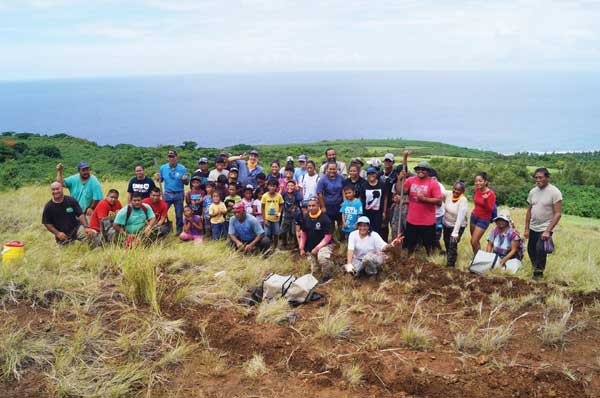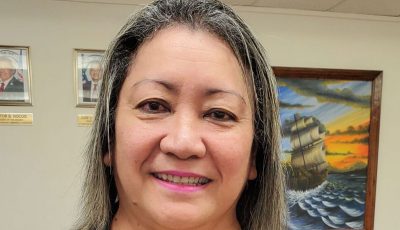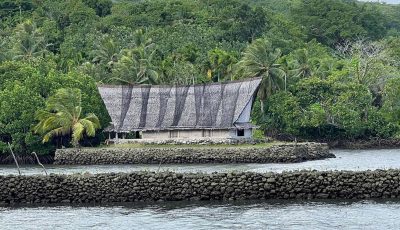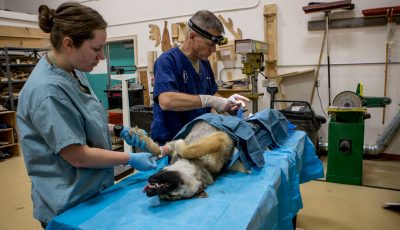Ten years of restoration in the Talakhaya Watershed
2017 marks the ten year anniversary of the Talakhaya Revegetation Project, a monumental effort to restore ecosystem health in the Talakhaya Watershed on Rota. Since 2007, the Bureau of Environmental and Coastal Quality (BECQ) and Rota Department of Lands and Natural Resources (DLNR) – Forestry have worked together with local volunteers and federal partners to revitalize the ecosystem for the benefit of both nature and the community. Thanks to the strong work of dedicated volunteers, Talakhaya has become an international example of how upland restoration can improve coral reef health in the receiving waters below.
“Ridge to Reef”
During rainstorms, heavy surface runoff and flooded streams flow over the land and into the sea. A “watershed” is the entire upland area that slopes downhill, leading into the ocean. When water flows through the watershed, it carries with it any pollution that is found in its path such as fertilizer, animal waste, litter, oil, and loose soil (aka sediment). Land-based sources of pollution, transported by water, are one of the primary threats to coral reef health in the CNMI. Therefore, effective conservation of coral reefs requires a ‘ridge to reef’ approach that considers all the impacts of upland disturbance on the health of coral reefs below.
The Talakhaya Watershed
The Talakhaya Watershed, located on the southern portion of Rota, is 1,100 acres of steep limestone cliffs and terraces, vegetated with native limestone forest and grassy savannahs. Streams flow through the watershed almost year round, and the caves and springs supply all domestic water on Rota. The coral reef below the watershed is a popular fishing area. Throughout the years, deer hunters have set fires to the grasses, an illegal tactic to draw deer out into the open. The result is large areas of barren, exposed soils that quickly erode into the ocean, creating sediment plumes that smother coral reefs. Due to deforestation and soil loss, as well as the importance of adjacent coral reefs, Talakhaya was identified as a priority watershed in 2005.
Re-vegetation and Education
Ten years since the start of the revegetation project, volunteers are still working hard to replant the soils that are exposed by intentional burning. Volunteers work during the summer rainy season to dig holes in the hard rock, where they plant Vetiver grasses with good roots that hold the soil in place. They also create rock barriers to slow down rainwater and keep it from causing more erosion as it flows toward the ocean. This year, 13 volunteers are in the process of planting over 30,000 grasses to retain soil and protect the reef. As healthy soil accumulates, volunteers also plant native trees that will ultimately spread into native forest, providing habitat for birds and other wildlife. In the dry season, Field Surveillance agents watch over the land to help prevent fires that can ruin years of hard work. The “No Burn” Campaign has been providing educational materials to residents about the importance of the Talakhaya Watershed and the extensive damage caused by burning. (Katherine Granziano, BECQ Watershed Coordinator)




























